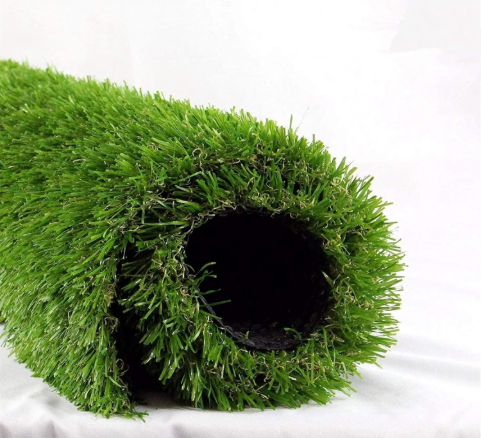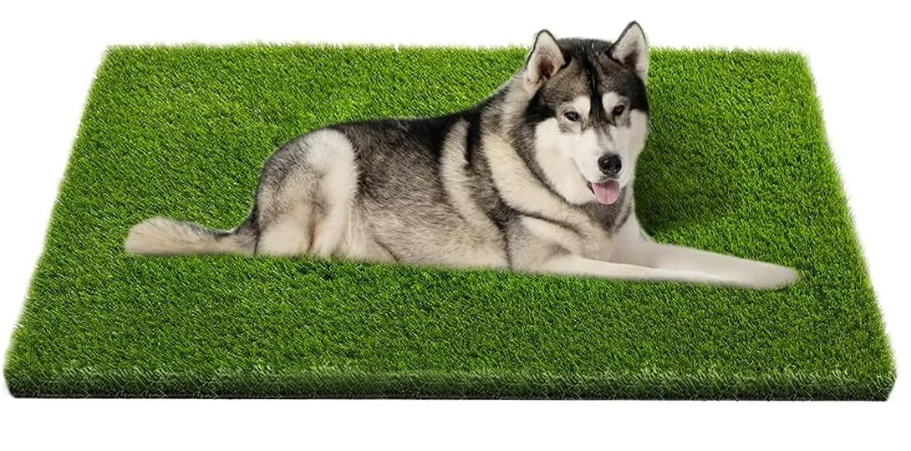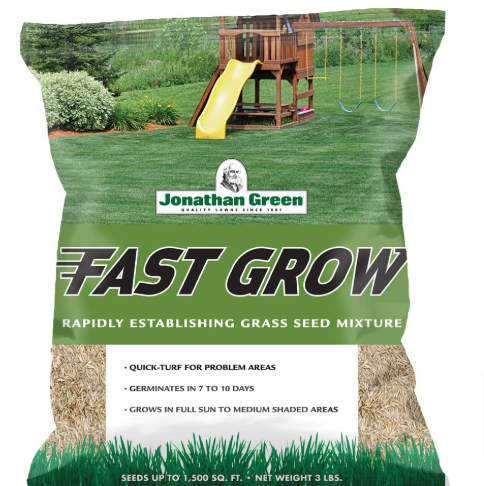Fake grass has revolutionized outdoor spaces, offering homeowners a lush, green lawn without the endless maintenance of natural turf. Whether you’re looking to transform your patio, create a pet-friendly area, or simply enjoy a beautiful landscape year-round, artificial grass provides the perfect solution. This comprehensive review covers the top fake grass options available in 2025, helping you make an informed decision for your specific needs.
Contents
- Why Choose Artificial Grass Over Natural Turf?
- Key Features to Consider When Buying Fake Grass
- Top 5 Best Fake Grass Products in 2025
- Installation Tips for Artificial Grass
- Maintenance and Care Guidelines
- Cost Analysis and Value Comparison
- Environmental Impact and Sustainability
- Comparing Artificial Grass to Natural Alternatives
- Future Trends in Artificial Grass Technology
- Conclusion
Why Choose Artificial Grass Over Natural Turf?
Artificial grass offers numerous advantages that make it an attractive alternative to natural lawns. First, it eliminates the need for regular watering, saving both time and money on water bills. Second, you’ll never need to mow, fertilize, or reseed your lawn again. Third, synthetic turf maintains its vibrant green appearance throughout all seasons, providing consistent curb appeal regardless of weather conditions.
Pet owners particularly benefit from artificial grass installations. The synthetic fibers resist staining and odors, while proper drainage systems prevent bacterial growth. Unlike natural grass, artificial turf won’t develop bare spots from pet activity or require expensive treatments to repair damage.
Nylon synthetic turf feels most like natural grass, and it looks pleasing to the eye because its soft texture and subtle hues better mimic the look and coloring of grass. This realistic appearance makes modern artificial grass virtually indistinguishable from natural lawns.
Key Features to Consider When Buying Fake Grass
Drainage Systems and Water Management
Artificial grass allows fluids to pass through its highly porous backing and into the ground below, preventing puddles or pooling on the surface. Quality artificial grass products feature strategically placed drainage holes that ensure proper water flow. Most artificial grasses have drainage holes with drainage rates of over 30 inches per hour per square yard, which is higher than natural grass and soil.
The drainage system consists of two primary components: the turf backing and the sub-base. The backing contains small holes that allow water to pass through, while the sub-base provides additional drainage capacity. This dual-layer system prevents water accumulation and maintains the integrity of your artificial lawn.
Material Quality and Durability
The material composition significantly impacts the longevity and appearance of your fake grass. Polyethylene fibers offer excellent durability and UV resistance, maintaining their color and texture for years. Polypropylene provides a more economical option while still delivering decent performance for lighter-traffic areas.
When evaluating material quality, consider the backing system as well. Quality artificial grass features a strong, flexible backing that prevents tearing and maintains dimensional stability. The backing should include adequate drainage perforations and UV stabilizers to prevent degradation.
Pile Height and Density
Pile height refers to the length of individual grass blades, typically ranging from 1 to 2 inches. Shorter pile heights work well for high-traffic areas and sports applications, while longer piles create a more luxurious appearance for decorative installations.
Density measures how closely the grass blades are packed together. Higher density creates a more realistic appearance and provides better durability under foot traffic. However, extremely dense grass may require more maintenance to keep blades upright and prevent matting.
Top 5 Best Fake Grass Products in 2025
1. Ottomanson Artificial Grass Turf 2’7″ x 10′ – Best Overall Value

The Ottomanson Artificial Grass Turf stands out as our top pick for overall value and versatility. This 2’7″ x 10′ artificial grass rug combines realistic appearance with practical functionality, making it perfect for various applications from patios to photoshoot backdrops.
Key Features:
- Professional-grade synthetic fibers that mimic natural grass texture
- Integrated drainage holes prevent water accumulation
- Customizable sizing options for different space requirements
- UV-resistant construction maintains color integrity
- Suitable for both indoor and outdoor installations
Pros:
- Excellent value for money
- Easy installation process
- Versatile sizing options
- Durable construction withstands heavy foot traffic
- Realistic grass appearance
Cons:
- Limited color variation compared to premium options
- May require periodic brushing to maintain appearance
Best For: Homeowners seeking a reliable, affordable artificial grass solution for patios, balconies, or decorative applications.
2. Artificial Grass Dog Pee Pads 51″ x 26″ – Best for Pet Training

This specialized artificial grass product targets pet owners who need an effective training solution. The 51″ x 26″ dimensions provide adequate space for dogs of various sizes while maintaining portability for indoor use.
Key Features:
- Professional-grade synthetic turf designed for pet use
- Strategic drainage holes facilitate easy cleaning
- Antibacterial properties prevent odor buildup
- Non-slip backing ensures safety during use
- Weather-resistant construction for outdoor placement
Pros:
- Excellent for pet training applications
- Easy to clean and maintain
- Portable design allows flexible placement
- Odor-resistant properties
- Durable construction withstands repeated use
Cons:
- Limited size options
- May not suit larger dog breeds
- Requires regular cleaning for optimal performance
Best For: Pet owners training dogs or cats, or those needing a hygienic outdoor pet area.
3. Realistic Deluxe Artificial Grass 7 FT x 15 FT – Best for Large Areas

The Realistic Deluxe Artificial Grass offers exceptional coverage for larger installations. At 7 FT x 15 FT (105 square feet), this synthetic turf provides an economical solution for substantial landscape projects.
Key Features:
- Thick, luxurious pile height creates premium appearance
- Advanced fiber technology ensures realistic texture
- Comprehensive drainage system prevents water issues
- UV-stabilized materials resist fading and degradation
- Professional-grade backing system ensures longevity
Pros:
- Excellent coverage for large areas
- Professional-quality appearance
- Comprehensive drainage system
- Long-term durability
- Cost-effective for extensive installations
Cons:
- Requires careful installation for optimal results
- May need professional installation for best appearance
- Higher initial investment compared to smaller options
Best For: Homeowners planning extensive landscape renovations or commercial applications requiring substantial coverage.
4. Petgrow Artificial Grass Rug 6.5 FT x 10 FT – Best Premium Option

The Petgrow Artificial Grass Rug represents the premium segment of artificial turf products. This 6.5 FT x 10 FT installation offers superior quality and realistic appearance for discerning homeowners.
Key Features:
- Ultra-realistic synthetic fibers with natural color variation
- Premium backing system with enhanced drainage
- Thick pile construction for luxurious feel
- Advanced UV protection maintains appearance
- Suitable for both indoor and outdoor applications
Pros:
- Exceptional realistic appearance
- Premium construction quality
- Excellent drainage performance
- Long-term color retention
- Versatile installation options
Cons:
- Higher price point than basic options
- May require professional installation
- Limited size availability
Best For: Homeowners seeking the highest quality artificial grass with premium features and exceptional appearance.
5. Professional Dog Grass Mat 47.3 x 31.5 inches – Best Compact Solution

This compact artificial grass solution provides an excellent option for small spaces or targeted applications. The 47.3 x 31.5-inch dimensions offer adequate coverage while maintaining portability.
Key Features:
- Compact design perfect for small spaces
- Professional-grade synthetic turf construction
- Integrated drainage holes for water management
- Easy-clean surface resists stains and odors
- Durable backing prevents slipping and movement
Pros:
- Perfect size for small patios or balconies
- Easy installation and maintenance
- Portable design allows flexible placement
- Excellent value for compact applications
- Suitable for various decorative uses
Cons:
- Limited coverage area
- May not suit larger applications
- Requires careful placement for optimal drainage
Best For: Apartment dwellers, small patio owners, or those needing targeted artificial grass coverage.
Installation Tips for Artificial Grass
Preparing the Surface
Proper surface preparation ensures optimal performance and longevity of your artificial grass installation. Begin by removing existing vegetation, rocks, and debris from the installation area. Level the ground using a rake or grading tool, ensuring proper slope for drainage.
Compact the soil using a plate compactor or hand tamper to create a stable foundation. This step prevents settling and maintains the integrity of your artificial grass over time. Install a weed barrier fabric to prevent vegetation growth through the synthetic turf.
Drainage Considerations
Artificial grass is designed with a built-in drainage system, meaning you usually don’t need a separate setup to keep water moving. However, proper installation techniques maximize drainage effectiveness. Ensure the installation area has adequate slope to direct water away from structures and high-traffic zones.
For areas with poor natural drainage, consider installing a French drain system or additional drainage materials beneath the artificial grass. This type of turf drainage consists of small holes punched every 4″ – 6″ in the turf’s backing. These holes allow water to easily flow through the turf, into the sub-base, and eventually into the soil below.
Securing and Finishing
Secure the artificial grass using landscape staples or adhesive, depending on the installation surface. For concrete or hard surfaces, use appropriate adhesives designed for outdoor applications. Ensure proper tension to prevent wrinkles or loose areas that could create tripping hazards.
Trim excess material using a sharp utility knife, following the natural grain of the grass fibers. This technique creates clean, professional-looking edges that enhance the overall appearance of your installation.
Maintenance and Care Guidelines
Regular Cleaning Procedures
Artificial grass requires minimal maintenance compared to natural turf, but regular cleaning ensures optimal performance and appearance. Remove debris such as leaves, twigs, and pet waste promptly to prevent accumulation and potential odor issues.
Rinse the artificial grass with water periodically to remove dust and maintain its vibrant appearance. For areas experiencing heavy use or pet activity, consider using specialized artificial grass cleaners that eliminate bacteria and odors without damaging the synthetic fibers.
Seasonal Maintenance Tasks
Inspect your artificial grass installation seasonally to identify any potential issues early. Check for loose edges, damaged areas, or drainage problems that might require attention. Address minor issues promptly to prevent more extensive repairs.
Brush the grass fibers periodically to maintain their upright position and natural appearance. Use a stiff brush or specialized artificial grass rake to restore the texture and prevent matting in high-traffic areas.
Troubleshooting Common Issues
If you notice standing water on your artificial grass, check the drainage system for blockages. Clear any debris from drainage holes and ensure proper slope for water flow. In extreme cases, additional drainage solutions may be necessary.
For areas showing signs of wear or flattening, increase brushing frequency and consider reducing foot traffic temporarily to allow the fibers to recover. Quality artificial grass typically rebounds well with proper care and maintenance.
Cost Analysis and Value Comparison
Initial Investment Considerations
The initial cost of artificial grass varies significantly based on quality, size, and features. Budget options typically range from $2 to $5 per square foot, while premium products can cost $8 to $15 per square foot. Consider your specific needs and budget when selecting artificial grass products.
Factor in installation costs if you plan to hire professionals. Professional installation typically costs $5 to $10 per square foot, depending on site preparation requirements and installation complexity. DIY installation can reduce costs but requires time and effort.
Long-term Value Assessment
Artificial grass provides excellent long-term value when compared to natural turf maintenance costs. Consider savings from water bills, lawn care equipment, fertilizers, and professional lawn services. Most artificial grass installations pay for themselves within 3 to 5 years through reduced maintenance costs.
Quality artificial grass products typically last 15 to 20 years with proper care, providing decades of maintenance-free lawn enjoyment. This longevity makes artificial grass an excellent investment for homeowners seeking long-term landscape solutions.
Return on Investment Factors
Artificial grass installations can increase property values, particularly in water-conscious regions where drought-resistant landscaping is valued. The consistent appearance and low maintenance requirements appeal to potential buyers and can differentiate your property in competitive markets.
Consider the time savings associated with artificial grass as well. Eliminating weekly mowing, seasonal fertilizing, and regular watering frees up valuable time for other activities while maintaining an attractive outdoor space.
Environmental Impact and Sustainability
Water Conservation Benefits
Artificial grass provides significant water conservation benefits, particularly important in drought-prone regions. A typical 1,000-square-foot natural lawn requires 15,000 to 25,000 gallons of water annually, while artificial grass requires no irrigation.
This water savings translates to reduced utility bills and decreased environmental impact. In regions experiencing water restrictions, artificial grass allows homeowners to maintain attractive landscapes without contributing to water shortage issues.
Chemical Reduction Advantages
Natural lawn maintenance typically requires regular applications of fertilizers, pesticides, and herbicides. These chemicals can leach into groundwater systems and contribute to environmental pollution. Artificial grass eliminates the need for these chemical treatments, creating a more environmentally friendly landscape solution.
The elimination of chemical treatments also creates safer environments for pets and children, reducing exposure to potentially harmful substances commonly used in lawn care.
Recycling and End-of-Life Considerations
Modern artificial grass products increasingly incorporate recycled materials and feature recyclable components. When artificial grass reaches the end of its useful life, many components can be recycled into new products, reducing waste and environmental impact.
Some manufacturers offer take-back programs for old artificial grass installations, ensuring proper recycling and disposal. Research manufacturer policies regarding end-of-life disposal when selecting artificial grass products.
Comparing Artificial Grass to Natural Alternatives
Maintenance Requirements
Natural grass requires consistent watering, mowing, fertilizing, and pest control to maintain an attractive appearance. These activities require significant time investment and ongoing costs. Artificial grass eliminates these requirements while providing consistent appearance and performance.
The maintenance freedom provided by artificial grass appeals to busy homeowners, elderly individuals, and those with physical limitations that make traditional lawn care challenging. This accessibility factor makes artificial grass particularly valuable for diverse populations.
Performance in Different Climates
Natural grass performance varies significantly based on climate conditions, with some varieties struggling in extreme heat, cold, or drought conditions. Artificial grass maintains consistent appearance and performance across all climate zones.
In regions with harsh winters, artificial grass eliminates the dormant brown periods associated with natural turf. Similarly, in extremely hot climates, artificial grass provides green landscapes without the water requirements necessary to maintain natural grass.
Aesthetic Considerations
Modern artificial grass technology has achieved remarkable realism, with many products virtually indistinguishable from natural turf. Advanced fiber technology, varied blade heights, and natural color variations create convincing grass-like appearances.
The consistent appearance of artificial grass appeals to homeowners who value uniformity and perfection in their landscapes. Unlike natural grass, artificial turf maintains its appearance regardless of weather conditions, foot traffic, or seasonal changes.
Future Trends in Artificial Grass Technology
Advanced Fiber Technologies
Manufacturers continue developing new fiber technologies that enhance the realism and performance of artificial grass. Recent innovations include multi-colored fibers that mimic natural grass variation and advanced texturing techniques that replicate the feel of natural turf.
Future developments may include smart fibers that respond to environmental conditions or incorporate antimicrobial properties for enhanced hygiene. These technological advances will likely improve the user experience and expand artificial grass applications.
Improved Drainage Systems
Drainage technology continues evolving to address various installation challenges and environmental conditions. New backing materials and perforation patterns enhance water flow while maintaining structural integrity.
Advanced drainage solutions may incorporate water collection and reuse systems, allowing homeowners to capture and utilize rainwater for other landscape applications. These innovations align with sustainability goals and water conservation efforts.
Sustainable Manufacturing Practices
The artificial grass industry increasingly focuses on sustainable manufacturing practices and materials. This includes using recycled content, reducing manufacturing waste, and developing biodegradable components.
Future artificial grass products may feature enhanced recyclability and reduced environmental impact throughout their lifecycle. These developments will make artificial grass even more attractive to environmentally conscious consumers.
Conclusion
Artificial grass has evolved from a simple lawn alternative to a sophisticated landscaping solution that offers numerous benefits for homeowners. The five products reviewed in this article represent the best options available in 2025, each serving different needs and applications.
The Ottomanson Artificial Grass Turf provides excellent overall value with its combination of quality, versatility, and affordability. Pet owners will find the specialized dog pee pads offer practical solutions for training and hygiene needs. Large area installations benefit from the Realistic Deluxe option, while the Petgrow premium product delivers exceptional quality for discerning homeowners.
When selecting artificial grass, consider your specific needs, budget, and installation requirements. Proper installation and maintenance ensure optimal performance and longevity, while the long-term benefits include reduced maintenance costs, water conservation, and consistent appearance.
Artificial grass technology continues advancing, with new materials and features enhancing performance and realism. This ongoing innovation ensures that artificial grass will remain an attractive landscape solution for years to come.
Whether you’re looking to reduce maintenance requirements, create a pet-friendly environment, or simply enjoy a perfect lawn year-round, artificial grass provides an excellent solution. The products reviewed in this article offer proven performance and value, helping you transform your outdoor space into a beautiful, low-maintenance landscape that you can enjoy for decades to come.
The investment in quality artificial grass pays dividends through reduced maintenance costs, increased property value, and enhanced outdoor living experiences. With proper selection and installation, artificial grass creates beautiful, functional outdoor spaces that require minimal ongoing care while providing maximum enjoyment.

